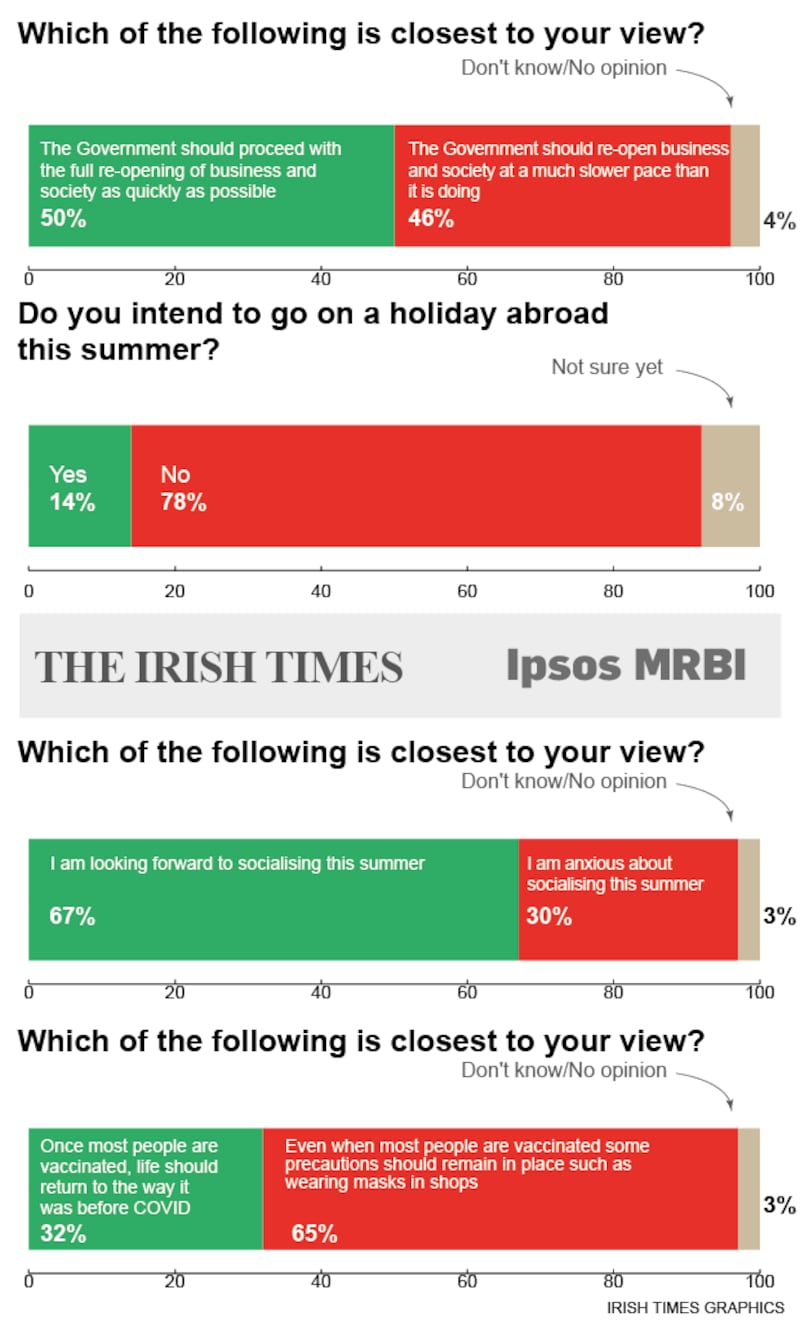When the Government began the reopening of social and economic life in early May, Taoiseach Micheál Martin repeatedly stressed that the approach would be “cautious and conservative”.
With the country halfway through the second month of reopening, and with further lifting of restrictions planned for early July, the pace is too slow for some people – and too quick for others.
In fact, Government policy continues to steer a middle road between those who want the country to open as quickly as possible and those who are alarmed by the pace of it and want things to be taken more slowly.

Politically, this is not a bad place for the Coalition to be, and Thursday’s findings – which showed that the public mood has switched massively behind the Government’s handling of the pandemic in recent months – bear out the public’s broad approval for the approach.
Nevertheless, there is a clear and almost equal division among the public on their preferred pace for the reopening. Asked which statement was closest to their view, 50 per cent agreed that “the Government should proceed with the full reopening of business and society as quickly as possible”; 46 per cent agreed that “the Government should reopen business and society at a much slower pace than it is doing”; 4 per cent had no opinion.
Wafer-thin
This amounts to a majority for the “as quickly as possible” voters when those offering no view are excluded – but it is a wafer-thin one.
The poll is quite clear on the contours of this division: it is along age lines. The proportions favouring each option, slow or fast, reverse almost exactly between the oldest and youngest cohorts, with the youngest – not surprisingly – most in favour of reopening as quickly as possible.
In the context of the vaccination rollout, this also means that those who are in least danger from Covid-19 are those who are most cautious; those who are unprotected are the most willing to run the risk of infection.
This age division is reflected across the responses to all the questions in today’s poll. Almost half of the youngest cohort (48 per cent) want life to return to normal after Covid-19; just 17 per cent of the over-65s do, preferring the continuation of some precautions.
Younger people are overwhelmingly looking forward to socialising; 43 per cent of the oldest voters say they are nervous about it. Younger people are also more likely to go on holiday abroad.
Next phase
What does all mean for the Government as it considers the next phase of reopening next month, watching as the UK wrestles with the Delta/Indian variant?
It suggests that the case for caution, for observing the existing restrictions, and for not “losing the run of ourselves” – as the Taoiseach has put it – is one that is understood among older cohorts.
Among younger people, however, there is an impatience to get their lives started again. While this is understandable, it is also a risk factor that is likely to weigh on the minds of decision-makers.
There was a furore last month when Minister for Health Stephen Donnelly briefly thought aloud about giving young people the jab before their older compatriots.
Looking at the implications of today’s data, he could be forgiven for giving it a second think, however politically difficult it might be.










